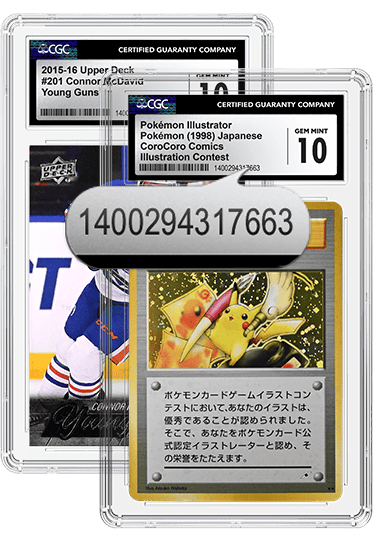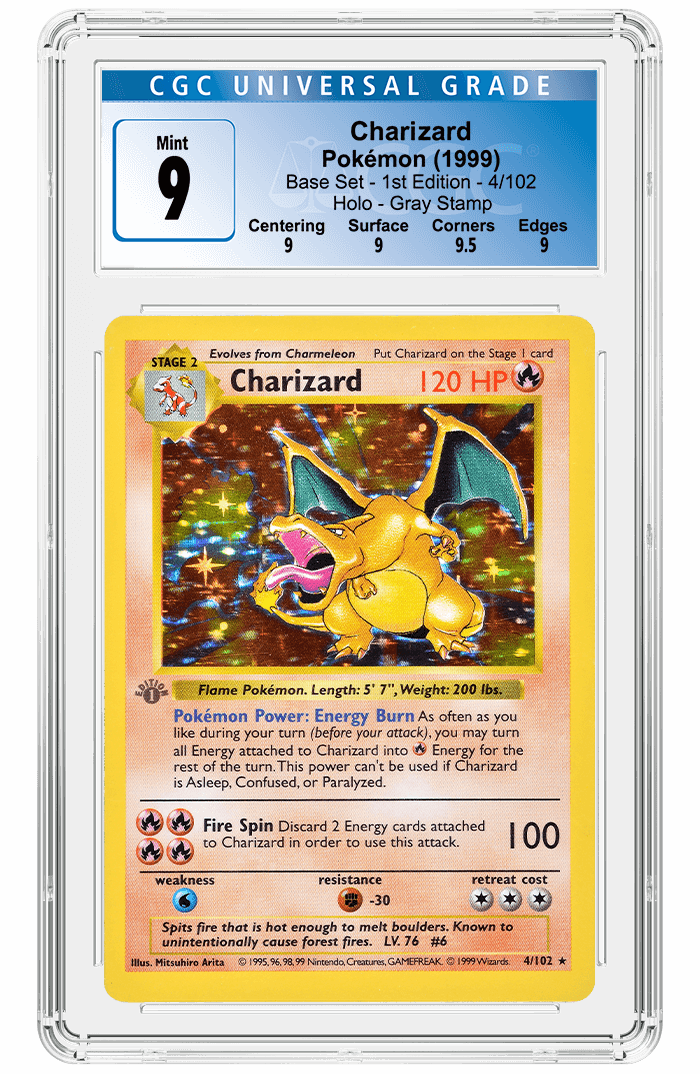Babe Ruth Rookie Card Market Guide
Posted on 1/21/2023
When it comes to baseball legends, few hold a candle to George Herman (Babe) Ruth Jr., also known as "The Great Bambino," "The Sultan of Swat," and many more well-earned nicknames. His achievements on the field made him an icon of the sport, as he became the first baseball star to receive overwhelming public adoration.
While there are no official Babe Ruth rookie cards, there are two pre-rookie cards that fit this criterion and are accepted as such. Much like the player, they are almost mythical themselves.
Who Is Babe Ruth?
In 1914, Babe Ruth signed his first contract with a baseball team, the Baltimore Orioles, which at the time was a minor league team in the International League. Later in the same year, his performances were so impressive as a pitcher that he was sold to the Boston Red Sox.
It wasn’t the easiest transition for Ruth since his new team felt he was brash. The manager was known not to include Ruth in initial rotations, but the reasons for this are unknown. It is rumored that Ruth's poor behavior contributed to the decision. As a result, Ruth ended up being passed to the Providence Grays, where he helped them win the pennant.
Almost as soon as the season ended, Ruth was recalled to the Red Sox in a game against the New York Yankees, where he pitched and won. Not long after, he became well-known as one of the best left-handed pitchers in the MLB. In four years, Babe Ruth won 87 games and three World Series titles. During these years, he also set a record for pitching consecutive shutout innings.
In his 1919 season, Babe Ruth only pitched 17 out of the 130 games he played. While he was used as a pitcher during the early part of the season, when the Red Sox were clearly out of contention, he was allowed to bat more. During this period, he drew crowds by hitting home runs that garnered press coverage. During this last season in Boston, he was the first player to play in all eight ballparks and hit a home run.
The Red Sox owner needed money, so he made the controversial decision to sell Ruth to the New York Yankees, which had been coveting the legendary player because of how he drew in the crowds. Upon signing, Ruth became a full-time batter, and the Red Sox were left with the "Curse of the Bambino," an 86-year superstition that led to many fans' heartache as their team couldn't break its drought of World Series titles.
On May 1, Ruth achieved something incredible, previously thought only to have happened once before: he hit a home run out of the ballpark. By the end of the month, he had achieved another record in the major leagues by hitting the most home runs in a month with 11, a record he went on to beat. The star power caused thousands of fans to flock to the games, with thousands more being turned away. Despite finishing third overall, thanks to Babe Ruth, Yankees drew in a seven-figure crowd, which was a first for any MLB team.
Due to his lifestyle, in 1925, Babe Ruth collapsed, spent a brief time in the hospital and was rumored to have died. Awkwardly, this led several British newspapers to publish obituaries. Ruth only played 98 games in this baseball season and had the worst season of his career. Despite his efforts, his health continued to decline. While he was still considered a great batter, he could not run or field. However, Ruth helped lead the Yankees to four more World Series championships during his tenure with the team (1923, 1927, 1928, 1932).
In 1935, Ruth joined the Boston Braves. At the end of the first month, Babe Ruth believed his career to be over, but was persuaded to stay on a little longer, where he achieved more home runs, one of which went out of the park. It would be his last official season as an MLB player. In 1936, Ruth was part of the inaugural Baseball Hall of Fame class before making his retirement official in 1937. Babe Ruth left the game as arguably the most iconic player to ever step foot on a baseball diamond, and his legacy has lived on accordingly.
What Makes a Babe Ruth Rookie Card So Valuable?
Babe Ruth's cards rarely come up for sale. When they do, they can sell for astronomical prices. For example, in June 2021, CNBC reported a sale for the 1914 Baltimore News Babe Ruth card that sold for close to $6,000,000 and was made available to the public via an investment platform — effectively buying a share in the sports card collectible.
Even if you move past the fact that Ruth is iconic and a true legend of baseball history, his cards are also considered vintage. The age of the cards being pre-war also means that they are scarce, and those that have survived often show signs of damage. Therefore, Ruth cards are extremely rare in any condition, but especially in high-graded condition. That's why most original Ruth cards are very expensive, which will likely price out most average collectors and investors.
What Is the Investment Potential for a Babe Ruth Rookie Card?
Both cards considered to be Babe Ruth rookie cards are highly valuable and desirable. Both cards are a solid investment, but the 1914 Baltimore News Babe Ruth card is the more valuable of the two. The card is so rare that anyone’s best chance of seeing it in real life is to visit the Babe Ruth Museum in Baltimore, Maryland.
Research is the most important thing to consider when evaluating what cards to invest in. When it comes to Ruth cards, it can be helpful to think about:
- The player's talent and potential:Ranging from how good a player is to who they are is important. Their career trajectory also plays into the value of any potential investment into their cards.
-
The player's marketability:Whether a player is popular among fans and collectors will determine how desirable their cards are. If it’s a legacy player, you should consider how relevant to the sport they still are. For example, are they heralded as legends, or have they been inducted into a Hall of Fame?
-
The player's position:While not as important, sometimes the player's position can factor into whether their cards are a good investment or not. This is because some positions are more popular among fans and collectors and are more desirable. Also, consider what position a player is known for if they switched during their career.
-
The scarcity of the cards:As with collecting anything, how rare a card is will determine just how valuable it could be. Babe Ruth is an iconic player from baseball history and, as such, finding a surviving example of his early cards from the pre-war era is rare.
-
The age of the player:Are they young players with a promising career you can invest in while their cards are available? That could be a great investment strategy if it pans out and they live up to that expectation. Similarly, players like Ruth become so iconic that their cards are sought decades after being released.
-
The popularity of the sport:It’s always good to collect where there is interest. As such, the more popular a sport, the better the chance of a better investment over time.
- Your investment strategy:Investing requires strategy, whether that’s aiming for retired or historical players like Babe Ruth, or investing more long-term in players that are up-and-coming and still proving themselves in their sport.
The Top Babe Ruth Rookie Cards
Technically, there aren’t any Babe Ruth rookie cards. However, two scarce pre-rookie cards are considered his rookie cards within the sports card hobbyist community. As one might expect, both cards are scarce and extremely valuable due to their age and rarity.
1914 Baltimore News Babe Ruth ($6,000,000)
The 1914 Baltimore News Babe Ruth card is one of the rarest cards in all of baseball collecting. While technically a pre-rookie card, it's considered the closest thing to a true Babe Ruth rookie card. The 1914 card is rarely seen on the market, with less than 10 copies known to exist in the world. When this card is occasionally discovered, they're often in poor condition due to the quality of the paper stock, damaged edges and the general age of the cards.
Interestingly, this card can be found either with blue or red borders, but that is not known to impact value. There isn't much sales data for this particular card since they're so rarely offered. PriceGuide.Cards lists a sale of the card for $560, without any further details, so their data might not be sufficient. Yet, as previously mentioned, a copy of the 1914 Babe Ruth card sold for upwards of $6 million in June 2021.
1915-1916 M101-4/5 Sporting News #151 Babe Ruth ($30,000)
It was once believed that the M101-4 was released after the M101-5, but it is now accepted that both versions were issued in 1916. This is considered the other Babe Ruth rookie card, as it features his earliest MLB appearance with the Boston Red Sox with an iconic black and white image.
The card has different versions when looking at the back. While these cards are known for having The Sporting News advertisements, some were printed with a blank back. Due to the age of the card, these cards are likely to have damaged edges, creasing and other defects associated with general wear and tear. Despite these flaws, it is still considered one of the most sought-after cards on the market and an actual piece of Americana.
PriceGuide.Cards shows recorded sales of the card in 2021 for $30,000, but the card sold in an August 2022 auction for $440,217, which proves its market value can be much higher.
Where To Buy Babe Ruth Rookie Cards
Due to the age and the rarity of Babe Ruth rookie cards, they remain only an aspiration for many collectors. It's not often that these cards come up for sale. When they do, it is through private sales and high-end auctions for vintage sports cards by companies like:
- eBay
- EBTH
- Goldin
- Sotheby's
- Christie's
- SCP Auctions
- Invaluable
- PWCC
- Memory Lane
- Pristine Auction
- Lelands
- Robert Edward Auctions
- Heritage Auctions
Conclusion
Babe Ruth rookie cards are prized pieces of vintage baseball card history. They represent one of the greatest players the sport has ever seen and are a tangible part of Ruth's astounding legacy. It’s also understandable that they are both highly valuable and very sought-after with so few surviving cards. Even at low grades, they command some pretty eye-catching prices.
Certified Sports Guaranty (CSG) will grade your card using four grading criteria: centering, the corners, edges and surface. CSG uses the utmost care and attention when grading cards for collecting or investing purposes. You can find out more about the CSG grading scale and process on the CSG website.
Professional bodies like CSG carry out expert grading and provide a certificate of authentication for each submitted card. Sellers should always have cards graded, and buyers should always check for proof of the condition before purchasing. Join CSG today to guarantee your collection and ensure the value of your cards for generations to come.
*Any mention of "investment potential" is for entertainment only and should not be construed as investment advice. The Certified Collectibles Group does not provide investment advice and is not liable for any buy, sell or trade decisions made by any parties.
Stay Informed
Want news like this delivered to your inbox once a month? Subscribe to the free CGC eNewsletter today!

